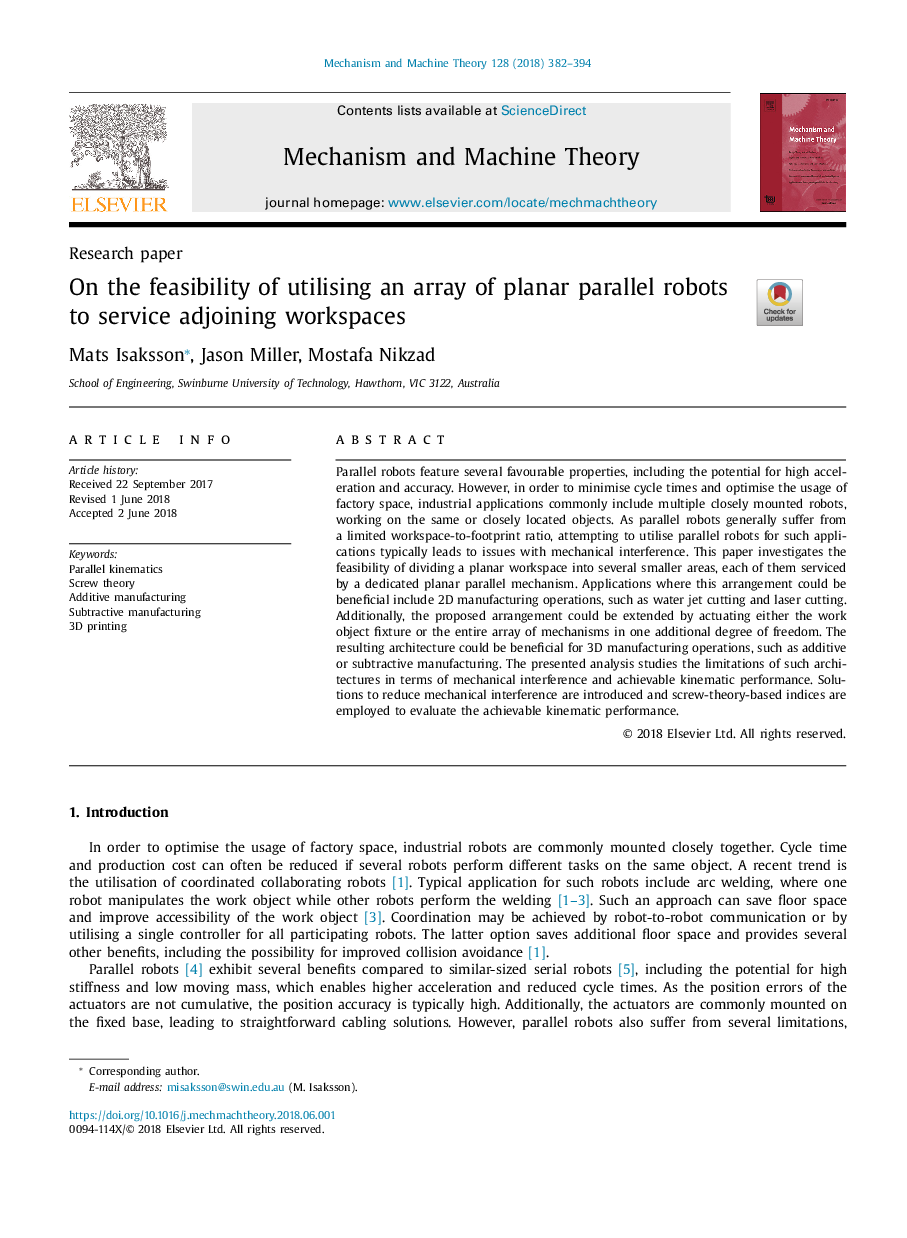| Article ID | Journal | Published Year | Pages | File Type |
|---|---|---|---|---|
| 7178944 | Mechanism and Machine Theory | 2018 | 13 Pages |
Abstract
Parallel robots feature several favourable properties, including the potential for high acceleration and accuracy. However, in order to minimise cycle times and optimise the usage of factory space, industrial applications commonly include multiple closely mounted robots, working on the same or closely located objects. As parallel robots generally suffer from a limited workspace-to-footprint ratio, attempting to utilise parallel robots for such applications typically leads to issues with mechanical interference. This paper investigates the feasibility of dividing a planar workspace into several smaller areas, each of them serviced by a dedicated planar parallel mechanism. Applications where this arrangement could be beneficial include 2D manufacturing operations, such as water jet cutting and laser cutting. Additionally, the proposed arrangement could be extended by actuating either the work object fixture or the entire array of mechanisms in one additional degree of freedom. The resulting architecture could be beneficial for 3D manufacturing operations, such as additive or subtractive manufacturing. The presented analysis studies the limitations of such architectures in terms of mechanical interference and achievable kinematic performance. Solutions to reduce mechanical interference are introduced and screw-theory-based indices are employed to evaluate the achievable kinematic performance.
Related Topics
Physical Sciences and Engineering
Engineering
Industrial and Manufacturing Engineering
Authors
Mats Isaksson, Jason Miller, Mostafa Nikzad,
